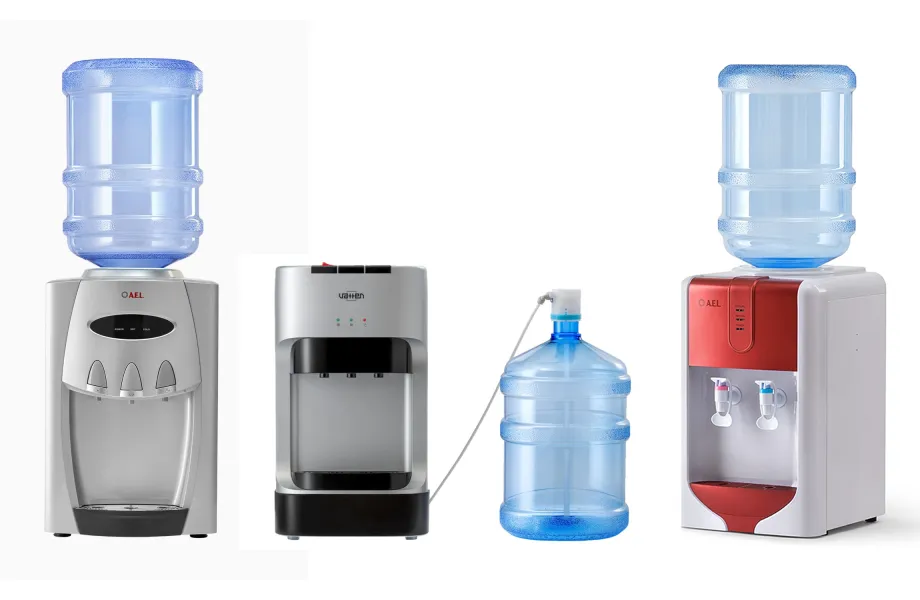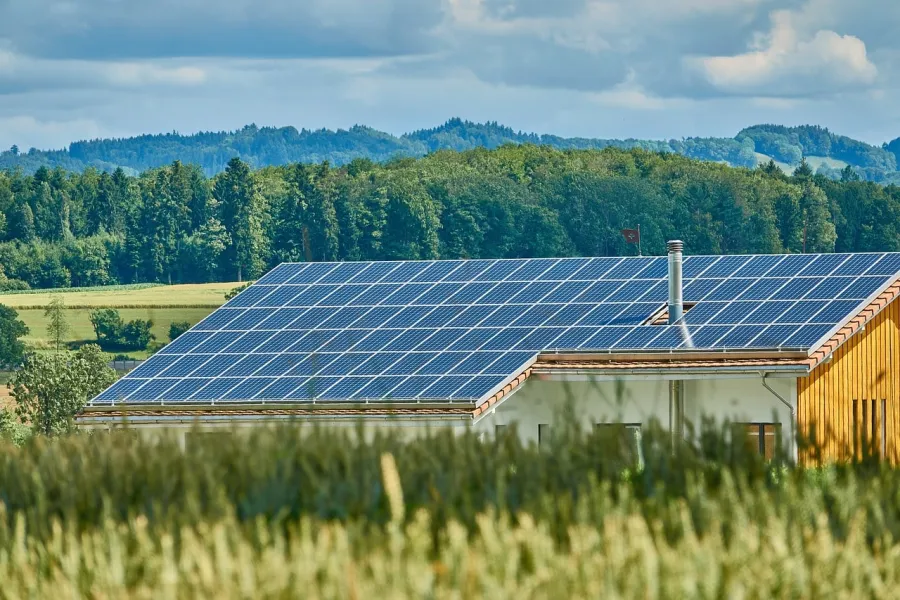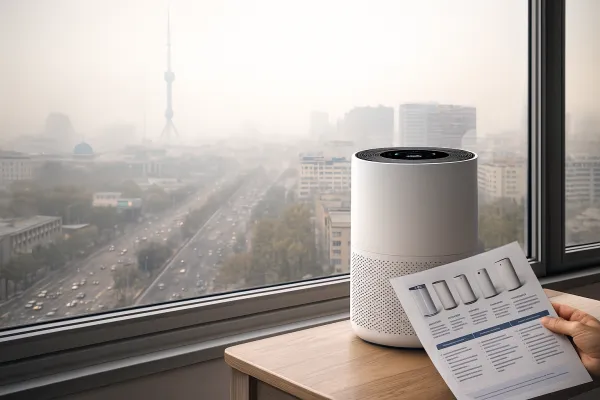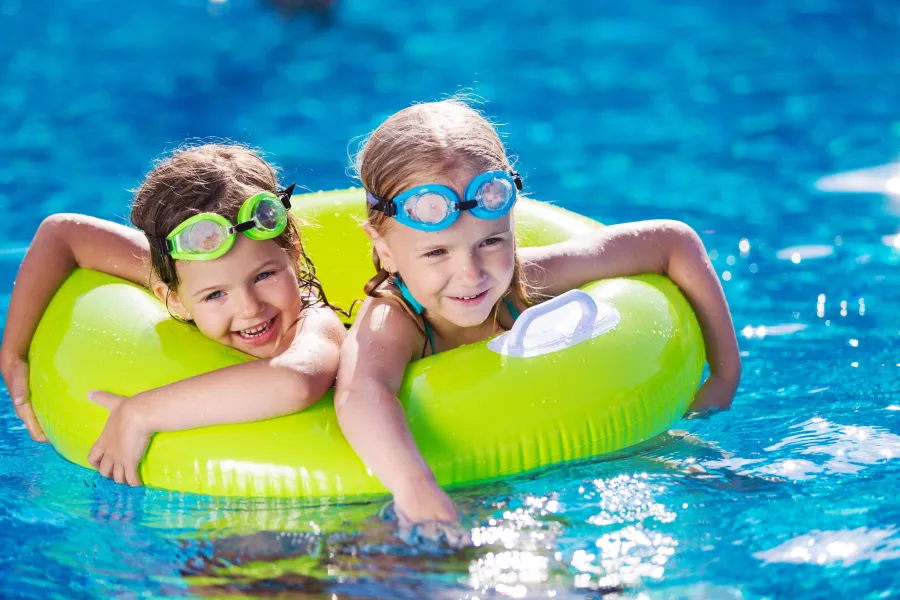The water cooler has long ceased to be just an item of office furniture or an element of the interior of a home kitchen. It became a symbol of taking care of his own health. Water is the basis of life. Proper use of clean drinking water directly affects our physical condition, well-being and productivity. Coolers provide convenient and continuous access to water, contributing to the formation of a healthy habit of regular water consumption throughout the day.
What is a water cooler?
A water cooler is a device for cooling and/or heating drinking water, providing convenient access to water of the required temperature. The main functions of the cooler include keeping the water cooled or heated, which makes it an indispensable assistant on hot summer days or cold winter evenings.
Functions of the water cooler
The main functions of the water cooler include cooling, heating, and sometimes room temperature water supply. Let's look at these functions in more detail:
Cooling
- Cooling the water to a pleasant and refreshing temperature is especially important on hot summer days.
- On average, coolers cool water to a temperature of about 10-15°C, although some models may provide a lower temperature.
Heating
- Heating the water to a temperature sufficient to prepare hot drinks such as tea, coffee, etc.
- On average, coolers heat water to a temperature of about 85-95°C. This is the ideal temperature for most hot drinks, ensuring they are properly brewed or dissolved.
Room temperature water
- Some coolers are equipped with a third tap, which allows you to get water at room temperature. This is convenient for those who prefer to drink water that is not cooled or heated.
- The water is supplied without changing the temperature, that is, it will be equal to the ambient temperature in the room or slightly different from it, depending on the storage conditions of the bottle.
These functions make the water cooler a multifunctional device capable of meeting a variety of drinking water needs for the home or office. In addition to the basic cooling and heating functions, modern coolers can be equipped with various additional features, such as water filtration systems, ultraviolet disinfection and water carbonization function, which make the use of the cooler even more convenient and safe. We'll talk about this below.

What are the types of water coolers
Installation location
- Desktop coolers – have a height of 25 to 50 centimeters, ideal for use at home or in offices with a small number of employees, due to their small size and tank volume, which averages up to one liter. These devices effectively save space and provide the necessary amount of water for a small group of people.
- Outdoor coolers are much larger, reaching a height of 90 to 110 centimeters, and have a roomy tank for 2-3 liters. Often, their design provides an additional cup cabinet or mini-refrigerator, which makes them an ideal solution for large enterprises and organizations with high traffic, providing sufficient water for a large number of visitors and employees.
Method of water supply
- With a bottle on top: Traditional coolers where the bottle is mounted upside down on the top of the device. Although this is the most common type, its disadvantage may be the need to lift a heavy bottle and its inconvenient installation.
- With a bottle from the bottom: A more modern version, where the bottle is placed at the bottom of the cooler and fed to the taps through a hose, which simplifies water replacement and reduces the risk of spillage.
Type of taps for water supply
- One of the safest and most convenient methods is to use a system in which water is poured out by pressing the faucet with a glass or mug. This method is very popular today due to its ease of use and the ability to operate the device with one hand, minimizing the risk of burns.
- Another method of water supply involves activation via a button. This method is less common and can present certain inconveniences, especially if the user holds a mug in one hand and other objects in the other, which makes pressing the button more difficult.
Method of cooling and heating water
- Electronic: Uses electricity to cool or heat water. This method is more economical, but may be less powerful compared to compressor cooling.
- Compressor: The principle of operation resembles a refrigerator, providing more efficient cooling of water. Although this makes the device more expensive to operate, the result justifies the cost due to high productivity.
Functionality
- With carbonation function: Allows you to add carbon dioxide to the water, making it carbonated to your taste.
- Some coolers are equipped with filtration systems that purify water from impurities and improve its taste.
- With UV disinfection: This technology provides additional protection against germs and bacteria, making the water even safer to drink.
- With protection from children and accidental taps: Most often, protection is available on hot water taps. This prevents accidental use and provides an additional level of security, which is especially important in homes with young children.
Choosing a water cooler is not just about choosing a device for cooling or heating water. This is taking care of health and ensuring convenient access to clean drinking water at any time of the day or night.

Water cooler: which one is better to choose for home
When buying a cooler, we often have the question "Which water cooler to choose?" or "Which water cooler is better?" and many still do not study the characteristics, but buy what they advertised in the store. It is necessary to take into account not only general criteria and price, but also more subtle details, such as tank volume and heating and cooling capacity, which affect the convenience and efficiency of use.
- Tank capacity: For families of two or three people, a desktop cooler with a tank of up to one liter is suitable. If your family is larger, or you often receive guests, it is worth considering an outdoor cooler with an enlarged tank for heated and cooled water.
- Heating and cooling power: High heating power (500-600 W) will ensure fast heating of the water, which is especially important in the morning when the whole family is preparing coffee or tea. To cool the water, there is enough power of 100-150 watts to maintain the optimal temperature for a refreshing drink throughout the day.
How to choose a water cooler for the office
When choosing a cooler for the office, in addition to the number of users and the need for additional functions, it is worth paying attention to the following aspects:
- The number of users and the volume of the tank: The best water cooler in the office is outdoor. For a small office (up to 10 people), a cooler with an average tank capacity (2-3 liters) is suitable. In large offices (more than 20 people), it is recommended to choose models with a tank of 4 liters or more in order to minimize the time for servicing the device.
- Heating and cooling capacity: In an office where the need for hot water is higher (coffee, tea), it is important to pay attention to the heating capacity. Models with a heating capacity of 600-700 watts will be able to quickly heat a large volume of water, which will reduce the waiting time. A cooling capacity of 100-150 watts will provide pleasant coolness of drinking water throughout the working day.
Buy a cooler or rent it: which is better?
For the house
- Buying a cooler is a good investment if you value stability and don't want to depend on monthly payments. This allows you to choose the perfect model that best suits your needs and interior. The purchase also releases from obligations to the service provider and offers more options when choosing water.
- Renting a cooler can be a convenient solution for those who want to avoid the initial purchase costs. Many bottled water suppliers offer coolers for rent, sometimes even for free or with a minimum fee, subject to regular purchase of water. This makes it easier to maintain and replace the device in case of a breakdown.
For the office:
- Buying a cooler provides full control over the choice of the model and its operation. This may be more beneficial in the long run, especially if the office is large and the water consumption is high.
- Renting a cooler is a flexible solution for offices with a variable number of employees or for those who are looking for ways to reduce initial costs. The lease may also include maintenance and regular replacement of the cooler, which relieves some of the burden on the administrative staff.
In both cases, it is important to consider the offers of several suppliers in order to find the most favorable rental or purchase terms, as well as evaluate the quality of service and feedback from other users.
Water bottles
- Most cooler bottles have a standard volume of 19 liters. This volume is usually enough for 1-2 weeks for a family of three or four people, depending on their water consumption. It is recommended to have 2-3 bottles available to avoid interruptions in access to drinking water, especially if your supplier delivers once a week or less.
- In office environments, water consumption is much higher, so one bottle can last from several days to a week, depending on the number of employees. The number of bottles required depends on the number of employees and the frequency of delivery. For a small office, 5-10 bottles per week may be required, while for large offices this figure may be significantly higher.
Shelf life of water bottles for coolers:
- Bottled water has an expiration date, which is usually from 1 to 2 years from the date of bottling, provided that it is stored in suitable conditions — away from direct sunlight and heat sources.
Conclusions
Choosing a water cooler for home or office requires a careful analysis of the needs and offers on the market. Buying a cooler can be beneficial for home use due to one-time costs and a larger selection of models. For the office, the lease offers flexibility in cost management and ease of maintenance. It is important to take into account the type of cooler, its volume, capacity and maintenance needs, as well as plan purchases of water bottles depending on the number of users and their consumption. A careful approach to selection will ensure convenient and uninterrupted access to high-quality drinking water.




